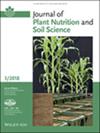Is Soil Fertility the Cause or the Effect of Land Invasion by Prosopis?
Abstract
Background
For 20 years, Prosopis juliflora is aggressively spreading throughout the “Njemps Flats” in Kenya, where it changes vegetation cover and affects pastoral livelihoods. Its invasion dynamics is related to shallow groundwater tables (Prosopis being a phreatophyte), and it reportedly preferentially colonizes sites with favourable soil fertility attributes.
Aim
We contest this latter hypothesis, surmising that the N2-fixing ability, the nutrient pumping by the deep root system, and year-round leaf litter fall will improve soil fertility attributes under Prosopis, irrespective of the initial soil status.
Methods
We assessed stand densities (number of individuals and their percentage cover) and selected soil attributes at 75 sites in the Njemps Flats. The stand densities of Prosopis were visualized by ground-truthed remote-sensed data, and subsequently related to soil fertility attributes. We further determined the isotope signatures (δ15N and δ13C) of the prevailing (past) C4-dominated pasture and the (current) C3-Prosopis vegetation, as well as at three depths of the topsoil.
Results
The findings confirm favourable fertility attributes (low EC and high N, C, P, and K contents) being associated with dense Prosopis stands. However, the isotope analysis of the topsoil indicates typical signatures of C4 vegetation in non-invaded pastureland and typical signatures of N2-fixing C3-plants in the top 5 cm (but not at deeper layers) of soils in Prosopis stands. Prosopis contributes about 16% of N derived from fixation, and significantly increases C, N, P, and Ca contents of the topsoil.
Conclusions
We conclude that high soil fertility is the result rather than the driver of Prosopis invasion.


 求助内容:
求助内容: 应助结果提醒方式:
应助结果提醒方式:


